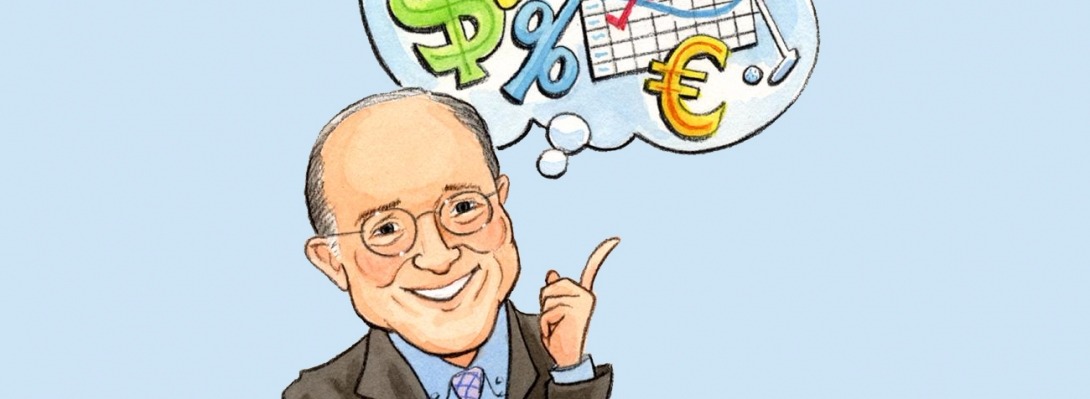|
April 2010 The uptrend continues – a very nice first quarter.
Economic forecasters sometimes describe the investment markets as a leading indicator, which means that they believe returns can anticipate good or bad economic news. Share prices fall when investors expect a recession, and rise when a recovery is expected--and last year's stock market growth seems to fit that pattern. The market rose last year faster than anybody expected, and so too, later, did the U.S. economy. On March 26, the U.S. Bureau of Economic Analysis reported that the U.S. gross domestic product increased at an annual rate of 5.6% in the fourth quarter of 2009, after a 2.2% increase in the third quarter.
Nobody knows how we, the community of investors, could have known, during the darkest hours of March 2009, that better economic times were around the corner.
The U.S. equity markets were generally higher across the board in the first quarter of 2010, which is a terrific contrast with where we were at this time last year. Indeed, CNNMoney.com reported that the returns for the first three months of this year ranked among the best first quarter performances in more than a decade.
Wilshire Associates reports that the Wilshire 5000 total market index, the broadest indicator of U.S. stocks, was up 6.42% in the first quarter of this year. Most of the action came in March. The Wilshire index was actually slightly down for January and February, but March produced a 6.61% rise in the index. The S&P 500 also rose 4.9% for the quarter.
Wilshire's Mid-Cap index was up 9.11% for the quarter; the Russell Midcap rose 8.67%. Wilshire's Small Cap 250 rose 9.00% in the first three months of the year, and the Russell 2000 returned 8.85% over the same period.
A generally rising tide--and signs of an improving economy--seems to have floated all boats.
The EAFE index, the broadest measure of developing nations, reported a relatively calm-looking year-to-date return of 0.22% on the MSCI/Barra web site, and the Far East index was up a robust 6.29% for the quarter. Emerging markets were up 2.11%. Meanwhile, government deficit troubles in Greece, Spain and Ireland, and to a lesser extent in Italy cast a shadow over the European economies. European stocks in the MSCI index were down 2.33% for the quarter.
Real estate stocks continued a recovery that began in 2009 after two very difficult years. The FTSE NAREIT Index, which is compiled by the National Association of Real Estate Investment Trusts, experienced a total return drop of 17.83% in 2007 and fell another 37.34% the following year. But in 2009, the broad real estate index rose 27.45%, and recorded a 10.60% total return in the first quarter of this year.
Even bonds offered positive returns. The Lehman U.S. Aggregate Bond index was up 1.64% for the first three months of 2010, and Treasury bonds started the year on a positive note.
Nobody knows whether this sunny investment climate will continue, or whether the strong market returns over the past 12 months will give way to a new bear market. However, one indicator suggests that we may not be walking blindly into another frightening meltdown like the one we all experienced in 2008 and the first two months of 2009. The Chicago Board of Options Exchange measures volatility in the stock market by its VIX index--which is more precisely an expectation of volatility and risk over the next 30-day period, and is sometimes called Wall Street's "fear gauge." On November 20, 2008, the VIX index hit a ten-year high of 80.86, according to data compiled by the IMCA-RC web site. On March 23, 2010, the VIX index closing price stood at a more historically normal level of 16.35.
Thanks to a positive uptrend in March, the past quarter's market returns represent one of those unusual periods when just about everything went up. Just a year ago, people were talking about the collapse of civilization, and six months ago there were worries that the economic stimulus package would not be enough to get the U.S. economy moving again--that the country was headed for a double-dip recession.
The economy won't be fully recovered until jobs come back, and the recent stock market rises haven't yet taken us back up to the levels before the Great Recession swept through like a hurricane. But people who were nervously sitting on the sidelines over the past year, and the past quarter, missed out a nice rally. Let's hope it continues.
Enjoy the Spring!
Best Regards, Edward J. Kohlhepp, CFP®, ChFC, CLU, CPC, MSPA Edward J. Kohlhepp, Jr., CFP®, MBA
Sources:
First quarter returns are higher than most others this decade: http://money.cnn.com/2010/03/31/markets/thebuzz/index.htm Economic growth rate: http://www.bea.gov/newsreleases/national/gdp/gdpnewsrelease.htm Wilshire Indices: http://www.wilshire.com/Indexes/calculator/ Russell index data: http://www.russell.com/indexes/data/daily_total_returns_us.asp Bond returns: http://www.lehman.com/indices/dailyreturn.html International indices: http://www.mscibarra.com/products/indices/international_equity_indices/performance.html Dollar's rise and fall: http://www.fxstreet.com/rates-charts/ VIX data: http://www.icmarc.org/xp/rc/marketview/chart/2010/ Global Stock Market index returns: http://www.emerginvest.com/WorldStockMarkets/Countries.html NAREIT (Real Estate) data: http://www.reit.com/IndustryDataPerformance/FTSENAREITUSRealEstateIndexDailyReturn/tabid/77/Default.aspx Unemployment data: http://money.cnn.com/2010/03/31/news/economy/ADP_private_sector_payrolls/index.htm?postversion=2010033109
The views expressed are not necessarily the opinion of Cambridge Investment Research and should not be construed directly or indirectly as an offer to buy or sell any securities mentioned herein. Investing is subject to risks including loss of principal invested. No strategy can assure a profit nor protect against loss. |




